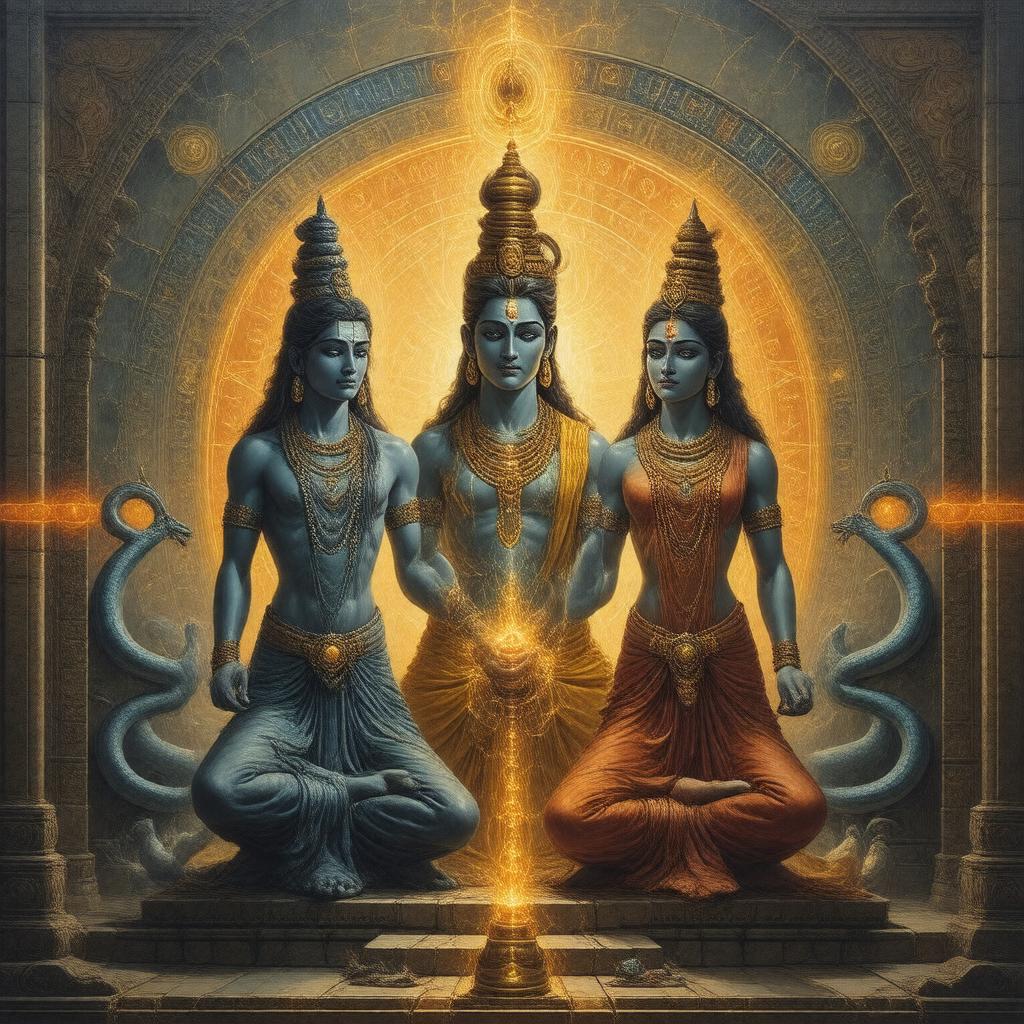Prompt
"Generate an image of a mystical, symbolic representation of Hindu Tantra, featuring a union of Shiva and Shakti, surrounded by intricate yantras, chakras, and kundalini serpents, with a subtle background of ancient Indian architecture, incorporating elements of rituals, mantras, and meditation, in a style that blends traditional Indian art with mystical and esoteric themes."

